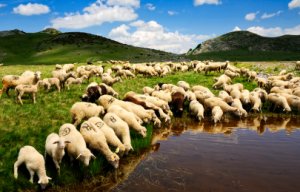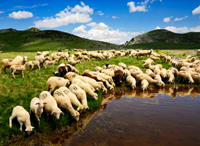
IWTO Wool Round Table to discuss sustainability

The newly formed Wool Carbon Alliance (WCA) today welcomed the Australian Federal Government’s announcement to recognise the positive role that farming and wool growing play in the carbon cycle. ‘We applaud the Federal Government and Opposition for taking this stance and look forward to opportunities that Australian woolgrowers may have in accessing on-farm carbon credits in our future carbon economy,’ WCA chair Chick Olsson said. Â In a show of unity, wo

18th November 2009
Innovation in Textiles
|
Sydney
 The newly formed Wool Carbon Alliance (WCA) today welcomed the Australian Federal Government’s announcement to recognise the positive role that farming and wool growing play in the carbon cycle.
The newly formed Wool Carbon Alliance (WCA) today welcomed the Australian Federal Government’s announcement to recognise the positive role that farming and wool growing play in the carbon cycle.
‘We applaud the Federal Government and Opposition for taking this stance and look forward to opportunities that Australian woolgrowers may have in accessing on-farm carbon credits in our future carbon economy,’ WCA chair Chick Olsson said.
In a show of unity, wool industry leaders have gathered in Sydney under the banner of the WCA to explore and recommend policy to Australian Wool Innovation (AWI) on funding vital research into this exciting new area for wool.
AWI says that, as wool is composed of 50% carbon that has been captured and stored from the atmosphere, it is a natural carbon store. In 2008/09, Australian woolgrowers grew and exported 384 million kgs of greasy wool. Preliminary estimates indicate that this equates to approximately 500 million kgs of CO2 equivalents which have been captured and stored from the atmosphere; each kilogram of greasy wool stores around 1.3 kgs of CO2, states AWI.
‘In addition to being a natural carbon store, wool is produced from a sustainable grassland system which itself has the capacity to store carbon. Combine this with woolgrowers’ ability to increase soil carbon by improved farming practices, and you have one of the most natural carbon capture systems on the planet,’ Mr Olsson said.
The WCA recommends a global marketing strategy aimed at recognising wool as the fibre of choice for those consumers who wish to make a personal decision in reducing global emissions. Underpinning this will be a research strategy that includes a complete wool life cycle analysis from paddock right through the wool pipeline to consumer. Further recommendations include a database of scientific evidence to support the marketing of wool’s environmental credentials.
‘This is a prime example, backed up by WCA members, of where R&D and marketing are now aligned and working hand in glove for a better future; not just for woolgrowers and regional Australia, but for the planet and its inhabitants,’ Mr Olsson said.
The Wool Carbon Alliance is an Australian Wool Innovation initiative.

Business intelligence for the fibre, textiles and apparel industries: technologies, innovations, markets, investments, trade policy, sourcing, strategy...
Find out more